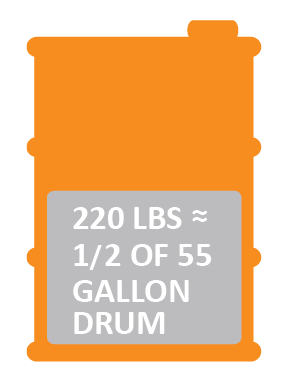Counting dangerous waste

Counting means you know the weight of your dangerous waste. This can include wastes that you:
- Generate.
- Accumulate.
- Dispose of.
- Treat.
- Recycle.
- Ship off-site on a manifest.
You may have to count some wastes you haven't thought of — for example, still bottoms.
Read our publication, Counting dangerous waste under the Dangerous Waste Regulations for detailed guidance.
Health care facilities and pharmaceuticals
Health care facilities must count both pharmaceuticals and non-pharmaceutical waste.
I want to:
Why count dangerous waste?
The type and amount of waste you generate each month determines your generator category. Your generator category determines which rules apply to your business. It is also needed to fill out your:
- Dangerous Waste Annual Report.
- Pollution Prevention Plan (if required).
Read our Counting Dangerous Waste publication.
How do you count or find the weight of your waste?
- Count your dangerous waste each month.
- The highest amount you generate (or accumulate) in any month is what determines your generator category.
- Do not average multiple months over time.
Here are three ways to find the weight of your waste:
1. Weigh and multiply
Option A: Weigh a smaller amount and multiply by the total gallons you have.
For example: Weigh 1 gallon of your waste. Then, multiply that by the total number of gallons you have.
Option B: Weigh your waste containers before and after adding waste. The difference equals the weight of your waste.
2. Calculate with density
- Start by estimating.
- Then calculate if you are close to the limit.
For example:
- A 55-gallon drum full of water weighs about 458 pounds (8.34 x 55 = 458).
- If you have a 55-gallon drum of liquid waste that is half full AND it has a density similar to water, you probably have a little over 220 pounds of waste (8.34 x 27.5 = 229).
Note: Some wastes have a significantly different density than water. A waste sludge may weigh much more.
3. Calculate with specific gravity
If you know the specific gravity of your waste, you can calculate the weight. The specific gravity is often listed on Safety Data Sheets (SDS or MSDS) for products that become waste.
For example:
- Multiply the specific gravity of the waste by 8.34 (the density of 1 gallon of water) to get the density of your waste in pounds per gallon.
- Then, multiple that density by the number of gallons you have.
- Read our Counting Dangerous Waste publication for more detailed information.
Related links
Contact information
Need help?
Contact a dangerous waste inspector in your region.






